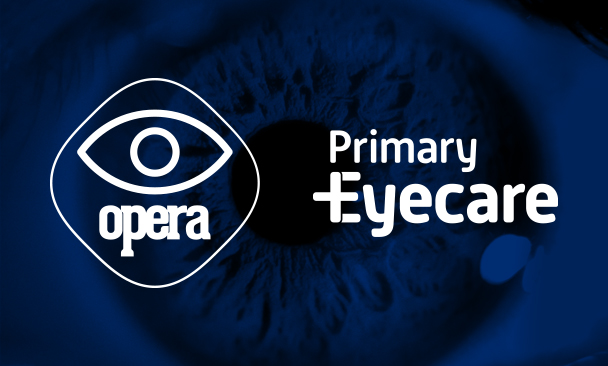Achieving Electronic Eye Care Referrals at Scale

20 November 2023
Where and How We Did It
NHS England’s Electronic Eye Care Referral (EeRS) programme has made varied levels of progress across the country. As national support for the programme ends, and local Integrated Care Boards (ICBs) look to make plans for electronic referrals for eye care at a local level, we reflect on one of the best examples of the implementation and delivery of an electronic eye care referral system at scale.
Primary Eyecare Services were commissioned to provide EeRS across Mid and South Essex ICB (2021) and the three ICBs in the North West – Cheshire & Merseyside, Greater Manchester and Lancashire and South Cumbria (2022). Prior to this, referral capacities had been trialled within the Greater Manchester area.
Working closely with our IT partners, Referral Management Services (RMS), we delivered the system using the existing OPERA platform. OPERA has been used to support electronic eye care referrals from local optometry practices onwards to their end destinations. This applied whether used in the context of a hospital eye service, between optometry practices for an enhanced NHS eye care service or extended into the GP system for wider care. To achieve this, the system accesses existing links on the NHS spine, NHS eRS and NHS mail.
We took part in this programme with the objective of minimising the number of IT systems required to complete the referral process. Our close working with Local Optical Committees and being able to draw on the existing OPERA platform helped us to achieve this quickly and successfully.
Strength in Numbers
Overall, in excess of 385,787 referrals were made using the platform’s GOS18 functionality in the areas in question over recent years. Over the past 12 months, a total of 142,174 referrals have been generated through the platform via 786 practices across the four Integrated Care Boards (ICBs).
The entire North West is covered by the single platform with some 134,636 referrals made through the system over the past 12 months. The average participation rate in the region is currently 92.7% with a total of 678/731 practices participating. In areas where the system has been in use for a longer period of time, there was greater engagement – with Greater Manchester demonstrating a 99% participation level.
Imaging and Attachments
Some 15.6% of all referrals had an attachment or image linked to the referral. These varied from visual fields attachments to retinal photographs through to full DICOM Optical Coherence Tomography (OCT) scans.
In some specialities, where images are potentially more useful, a much higher proportion of referrals with an image or attachment were included. For example, 40% of referrals for medical retina/vitreo retinal/ neuro-ophthalmology reasons had images attached, as did 25% of glaucoma referrals.
These were all stored in the systems-associated picture archiving and communication system (PACS) with the link available to receiving clinicians in the hospital eye service, enabling them to access and view the images with speed and accuracy.
Methods of Transmission
Referrals are transmitted onto destinations via the most appropriate method, as agreed locally and with the receiving providers, depending on the type of referral involved.
All referrals saw a copy of the referral automatically sent to the patients’ GPs via electronic MESH messaging.
As a result, GPs have noticeably seen a reduction their ever-increasing workload as a result of no longer having to make onward referrals requested from optometry practices.
The system also enables patient support variations, such as transport requirements and adaptations for people who are hard of hearing or have disabilities, to be flagged up to the receiving care provider.
Advice and Guidance
During the time we have been implementing the electronic referral functionality, an advice and guidance tool – ADVISR – has also been developed. Integrated into OPERA, ADVISR has been through external rigorous clinical and technical testing and review and has now been approved. It is available for deployment when commissioners have worked through wider advice and guidance requirements with hospitals and Local Optical Committees.
Onward Referrals
Referrals to hospital eye services (85.5%) are enabled across all sub-specialities of ophthalmology. the three most common specialities referred are cataract, glaucoma and medical retina – see chart below.
Onward referrals to other optometry practices (3.1%) to access enhanced NHS eye care services most commonly to glaucoma filtering, pre cataract referral and low vision pathways.
User Experience
OPERA is one of the early adopters of the national EeRS API integration tool which has seen double entry requirements by practitioners minimised as a result of integration with their practice management systems (PMS).
Working with PMS providers allows OPERA live integration to initiate referrals with five PMS systems (Socrates, Opticabase, Optinet, i-Clarity and Optix) – with a further two in testing.
A user experience survey in late 2022 demonstrated that 92% of users rated the platform 7/10 or more for ease of use.
Connectivity for Eye Care
Connectivity has been identified as a key enabler to support eye care pathways and remains an ongoing challenge across England. The implementation of OPERA’s GOS18 referral functionality across the four ICBs has been shown to benefit optometry, general practice and ophthalmology services and providers. Whilst there are further learnings and developments to be utilised, the platform has been very well received by the local systems.
The OPERA GOS18 referral functionality is also utilised to support and add value to single point of access and triage services delivered via Primary Eyecare Services in areas such as, Bassetlaw, Croydon and West Hampshire.
Dharmesh Patel, CEO of Primary Eyecare Services, explained the impact of applying referrals at scale in more detail, saying:
‘The OPERA electronic eye care referral system capability has proven itself as an invaluable asset, showcasing how an efficient platform can be harnessed to streamline and facilitate electronic referrals from optometry at scale for the benefit of the local systems at large.’